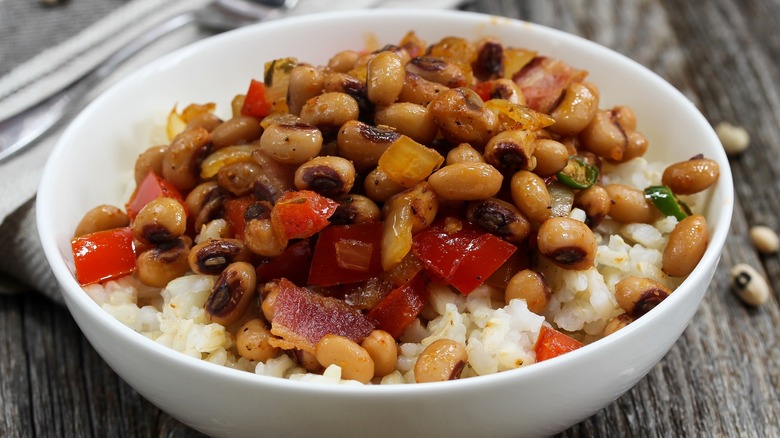Celebrate Prosperity With These Juneteenth Foods
Food is an integral part of cultural celebrations across the globe, and Juneteenth is no exception. In fact, this African American holiday commemorating the official end of slavery in the U.S. arguably holds some of the most significant food-related customs in the country. As the final state to release its 250,000 slaves from bondage after the Civil War, Texas capitulated on June 19, 1865, creating the true Emancipation Day for all Americans, according to Texas Monthly. The resulting celebrations, which began a year later in 1866 and came to be known as Juneteenth, deeply incorporate history, beliefs, and aspirations into the culinary traditions of the holiday.
After spreading rapidly through the country in the early 20th century, Juneteenth now brings millions of people together to commemorate ancestral ties and celebrate liberation, notes Bon Appétit. A state holiday in Texas since 1980 (via the Congressional Research Service), Juneteenth became a federal holiday in 2021 after President Joe Biden signed the bill into law, officially making June 19 Juneteenth National Independence Day (per The White House).
Though recipes and practices in celebration of Juneteenth vary based on location, the unmistakable focus of the holiday is on food and community. Here are some recurring traits, symbols, and dishes that define most Juneteenth gatherings.
The color red, barbeque, and prosperity foods
Juneteenth tradition washes food-laden tables in brilliant shades of red every summer. From red velvet cakes to hot sauces, magenta-tinted hibiscus teas, ruby-red watermelons, and dark crimson beans and rice, the significance is unmistakable. Oprah Daily explains how the color red has deep roots in Yoruba and Kongo African cultures, from which many enslaved Africans arrived in Texas through Galveston Island. Red holds spiritual and philosophical value, incarnating concepts such as sacrifice, power, perseverance, and transition.
Barbeque meats, smoked in earthen pits or sizzled on modern-day grills, are a hallmark of Juneteenth celebrations as well. Favorite offerings include ribs, chicken, hot links, brisket, and pork, typically doused in red barbeque sauce. Communal outdoor barbeques bring neighbors together, playing a big role in Southern and African American society, explains Texas Monthly. Multiple books and newspapers of the late 1800s mention barbeque in early Juneteenth festivities.
The so-called prosperity foods round out the must-haves on Juneteenth; Oprah Daily notes side foods, such as cornbread, cabbage, yams, potatoes, and black-eyed peas, which represent wealth. Corn, meanwhile, personifies gold, while collard greens embody good luck and hope. These Juneteenth foods also honor the efforts of former slaves who grew them, along with sweet potatoes, to survive while toiling under bondage.
As published in Bon Appétit, Chef Omar Tate wants his son to experience Black joy and know the importance of preserving their culture. Juneteenth celebrations are still passionately cooking up and dishing out that sentiment after more than 150 years.

